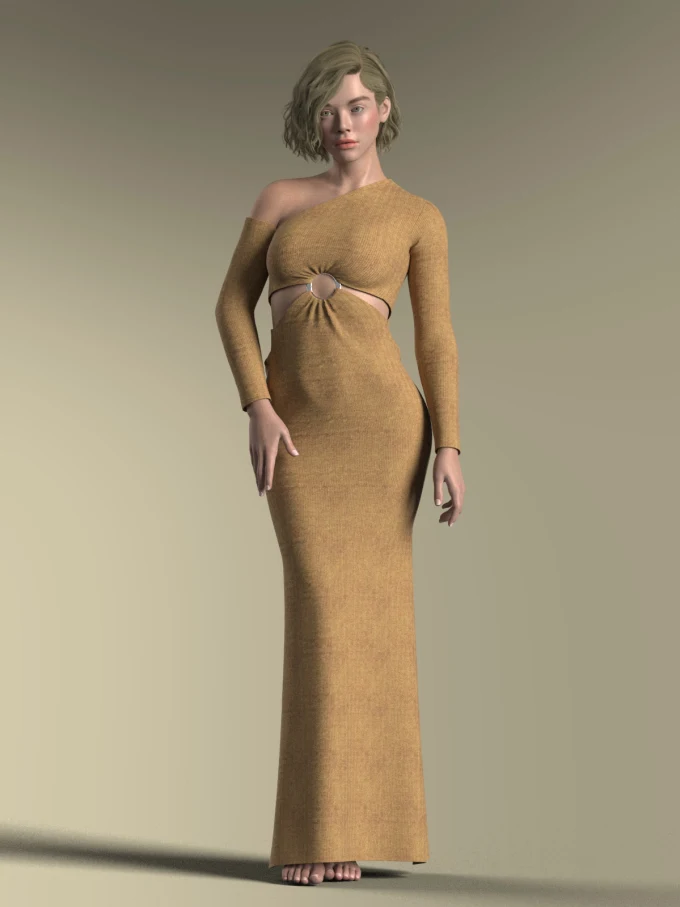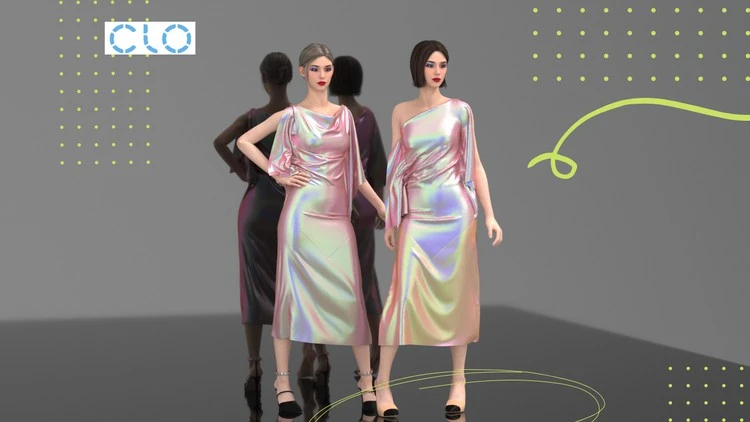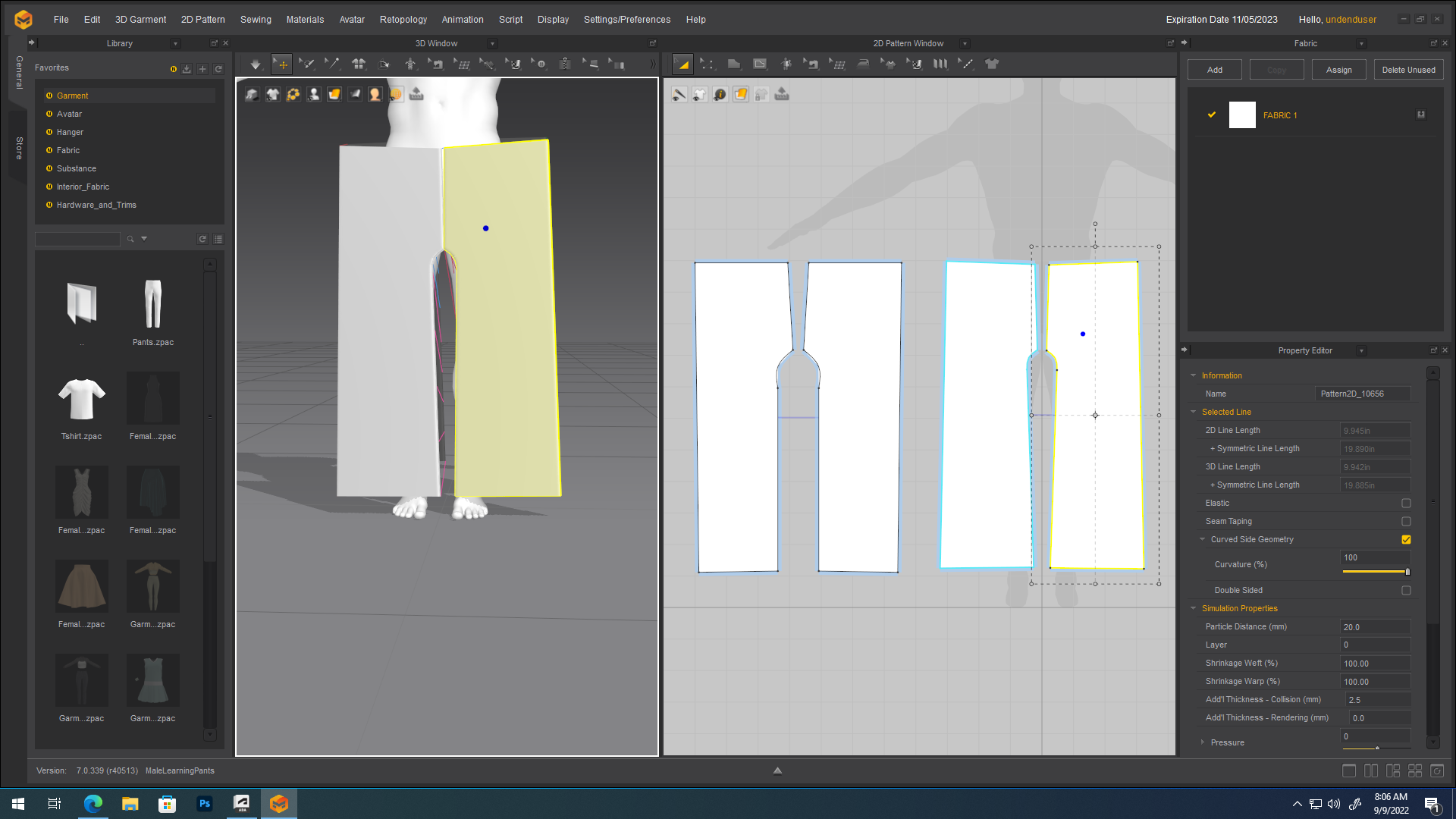3D fashion designs refer to the creation of clothing and accessories using three-dimensional digital technology. This involves designing and visualizing garments in a virtual environment, often using specialized software and tools. This technology allows fashion designers to create realistic simulations of clothing items, enabling them to experiment with various fabrics, textures, colors, and styles before actually producing physical prototypes. 3D fashion design can streamline the design and production process, reduce waste, and facilitate communication between designers, manufacturers, and clients.

Table of Contents
Key aspects of 3D fashion designs include:
- Virtual Prototyping: Designers can create digital prototypes of clothing items, eliminating the need for physical samples at the early stages of design.
- Material Simulation: The software allows designers to apply various virtual fabrics and materials to garments, allowing them to see how different textures and materials interact with each other.
- Fit Testing: Designers can simulate how garments will fit on different body types and make necessary adjustments before producing physical samples.
- Collaboration and Communication: 3D designs can be easily shared with team members, clients, and manufacturers, facilitating better communication and understanding of design concepts.
Fashion Design Patterns: Fashion design patterns are templates or blueprints used by designers and manufacturers to create garments consistently and accurately. These patterns serve as the foundation for constructing clothing items and ensure that the pieces fit properly and are aesthetically pleasing. Patterns are typically developed based on specific design ideas and sketches and are translated into technical drawings that guide the construction of the final garment.
Key elements of fashion design patterns include:
- Blocks or Slopers: These are basic templates used as a starting point for creating more complex designs. Blocks are typically simple, fitted shapes that are modified to create various styles.
- Grading: Grading involves creating different sizes of a pattern, ensuring that the proportions and fit are maintained across various sizes.
- Seam Allowances: Patterns include specific allowances for seams, hems, and other construction elements, ensuring that the final garment is the intended size.
- Notches and Markings: These are used to align pattern pieces correctly during garment assembly.
- Grainlines: Indicate the direction of the fabric’s weave, ensuring that the fabric is cut and sewn correctly for the intended drape and fit.
Fashion designers often create their own patterns based on their design concepts, while pattern makers may also specialize in the technical aspects of creating patterns that can be easily translated into garments. Accurate and well-constructed patterns are crucial for achieving a high-quality final product in the fashion industry.
Designing 3D custom fashion design in Clo 3D software
Creating custom 3D fashion designs in software like Clo3D involves a series of steps to bring your design ideas to life virtually. Clo 3D is a popular software used for 3D fashion design and simulation.

Here’s an overview of the process:
- Installation and Setup:
- Download and install Clo 3D software on your computer.
- Familiarize yourself with the interface, tools, and features of the software.
- Creating a New Project:
- Open Clo 3D and start a new project.
- Select the appropriate settings for garment type, gender, and other parameters.
- Importing Base Patterns or Blocks:
- Import or create base patterns or blocks that will serve as the foundation for your design. These patterns represent the basic shapes of the garments.
- Designing the Garment:
- Use the software’s tools to modify and manipulate the base patterns to create your desired garment design.
- Add style lines, seam lines, darts, pleats, and other design elements to achieve the desired look.
- Fabric and Material Selection:
- Choose fabrics and materials from the software’s library to apply to your design.
- Adjust the material properties to simulate different textures, colors, and patterns.
- Virtual Fitting and Adjustments:
- Fit the garment on a virtual avatar or model within the software.
- Make necessary adjustments to ensure proper fit and aesthetics. This includes adjusting lengths, widths, and other measurements.
- Simulation and Visualization:
- Use the simulation feature to see how the garment drapes and moves on the virtual model.
- Observe how the chosen fabrics interact with the design, making adjustments as needed.
- Accessories and Details:
- Add accessories such as buttons, zippers, belts, and other embellishments to enhance the design.
- Pay attention to small details that contribute to the overall aesthetics.
- Rendering and Presentation:
- Render the final design to create realistic images or animations of the garment.
- Showcase the design from different angles to present it effectively.
- Review and Iteration:
- Review the design and simulation results.
- Make any necessary further adjustments to improve the design or fit.
- Export and Sharing:
- Export your design files in formats suitable for sharing or further development.
- Share your design with team members, clients, or manufacturers for feedback and collaboration.
Remember that mastering 3D fashion design software like Clo 3D requires practice and experimentation. The more you work with the software, the better you’ll become at translating your creative ideas into virtual garments. Clo 3D’s official resources, tutorials, and online communities can be invaluable for learning and improving your skills.
Designing 3D custom fashion design in Marvelous Designer software
Designing custom 3D fashion designs in Marvelous Designer software involves a set of steps that allow you to create realistic garment simulations. Marvelous Designer is specifically designed for creating dynamic 3D clothing and fabric simulations.

Here’s a general guide to help you get started:
- Installing and Setting Up:
- Download and install Marvelous Designer on your computer.
- Familiarize yourself with the interface, tools, and features of the software.
- Creating a New Project:
- Launch Marvelous Designer and create a new project.
- Select the appropriate project settings, such as the size of the avatar or model you’ll be designing for.
- Importing Base Avatar:
- Import a base avatar or model into the software. You can use the built-in avatars or import your own.
- Creating Patterns:
- Use Marvelous Designer’s pattern creation tools to design the base patterns for your garment.
- Draw lines, curves, and shapes to create pattern pieces like front panels, back panels, sleeves, etc.
- Sewing and Seams:
- Use the sewing tools to join the pattern pieces together along their edges to create seams.
- Define the sewing parameters and stitches to simulate how the fabric will interact.
- Adding Fabric Properties:
- Apply fabric properties to the pattern pieces to simulate different types of fabrics and materials.
- Adjust parameters like thickness, elasticity, and friction to achieve realistic simulations.
- Simulating the Garment:
- Use the simulation feature to see how the garment drapes, moves, and reacts to the avatar’s movements.
- Simulate different poses and animations to ensure the garment behaves naturally.
- Adjusting Fit and Design:
- Make adjustments to the patterns to achieve the desired fit and design aesthetics.
- Experiment with different styles, folds, and details.
- Details and Accessories:
- Add buttons, zippers, pockets, and other accessories to enhance the design.
- Pay attention to small details that contribute to the overall realism.
- Rendering and Visualization:
- Render the final design to create images or animations that showcase the garment.
- Adjust lighting and camera angles to present the design effectively.
- Export and Collaboration:
- Export the design in formats suitable for sharing or further development.
- Collaborate with team members, clients, or manufacturers by sharing your design files.
- Learning and Improving:
- Marvelous Designer has a learning curve, so practice and experimentation are key to improving your skills.
- Utilize the software’s tutorials, documentation, and online community resources to enhance your knowledge.
Keep in mind that Marvelous Designer’s strength lies in its fabric simulation capabilities. It’s an excellent tool for creating realistic cloth and fabric effects, making it particularly useful for fashion design.
Our Services
We are here to create 3D custom designs with the client’s requirements. We have expertise in working with Clo 3D or Marvelous Designer software. You can provide reference images, mood boards, specific measurements, graphics, and materials. All these details will be used in the renders and simulations. We will provide high-quality OBJ, FBX, PNG, JPEG, PDF, and TIFF files as per your requirement. Here below you can submit your requirement:
We are constantly asked, “Why are you so much cheaper than your competition?” It’s simple. Our experienced team, well-established customized processes, bulk amount orders, and operational setup in India allow us to keep our operating costs low, and we love to share these savings as an added advantage to our clients. This is where the saving for us is, and we pass that on to you! We offer technical drawing services at unbeatable prices.
Looking for 3D Fashion Design Services using Clo 3D or Marvelous Designer?
Request for a Custom Quote (free, no-obligation)
- Submit your custom requirements and get the price quote with the delivery timeline.
Submit your requirements below
